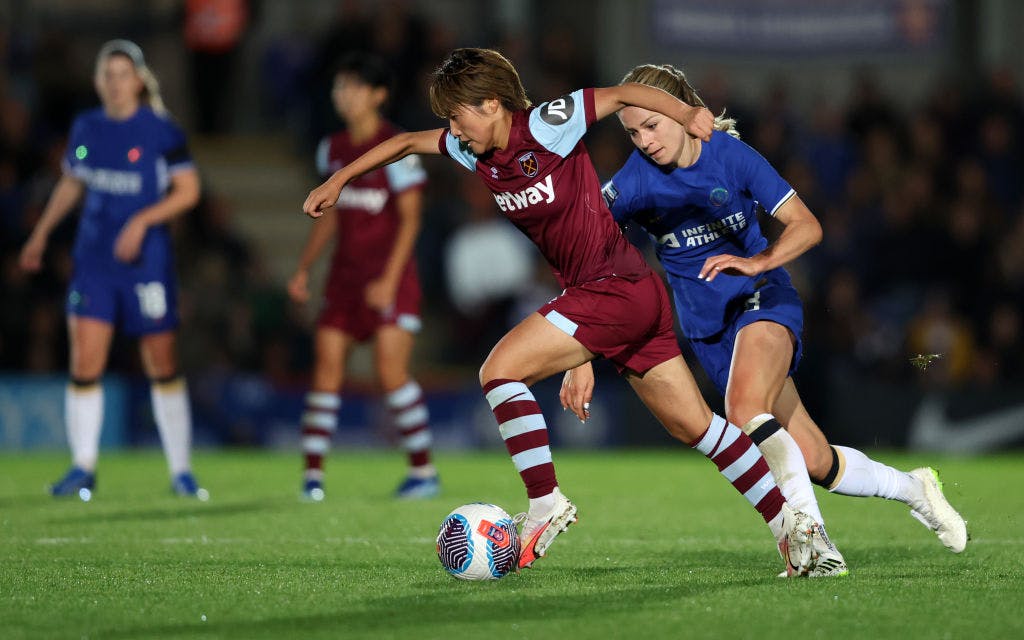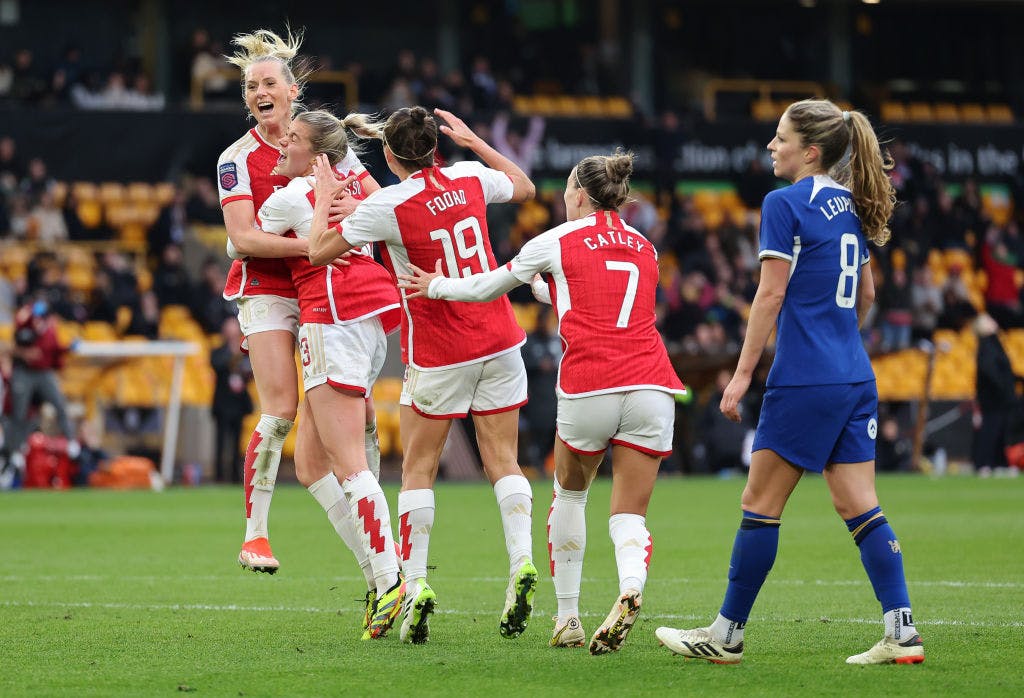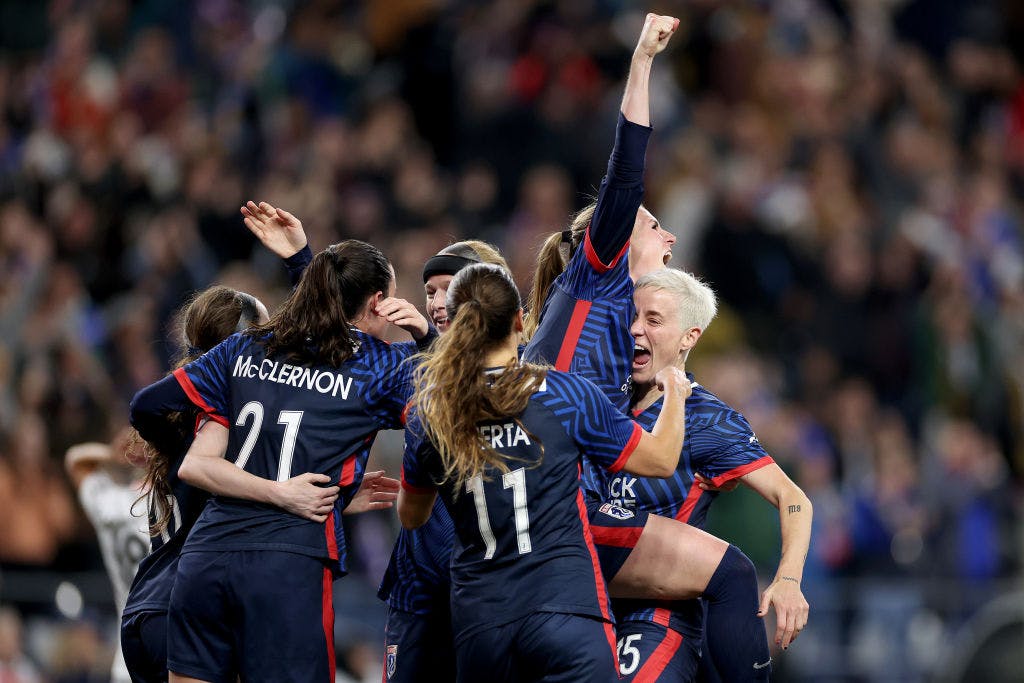- Commercial objectives are driving sponsorship growth in women’s football
- CSR initiatives have rolled into wider purpose-led deals
- Exposure-led deals for WSL and NWSL media rights have helped drive value upward
This week’s news that Barclays is set to renew as the title sponsor of the Women’s Super League at double the previous value has set a new benchmark for women’s football, proving that women’s sport partnerships are increasingly providing brands with returns on investment.
The UK bank’s original three-season WSL title deal, agreed with the Football Association from 2019-20 to 2021-22, was worth £1.8m ($2.1m/$2.3m) per season, with £700,000 per season linked to Barclays’ role as lead partner of the ‘FA Girls’ Football School Partnerships’, leaving the title rights component worth £1.1m per season.
With the new deal reportedly worth £9m per season for title rights to both the WSL and the second-tier Women’s Championship title rights alone, the combined property is on course to register a more than eight-fold increase in just six years.
Such a leap in price indicates that the sponsorship has moved well beyond a corporate social responsibility play to one with real commercial teeth for the sponsor brand.
But is this change of key, from minor to major, spreading across the sponsorship landscape in women’s football? Are commercially driven conversations now the norm, with standalone CSR and purpose-led objectives a thing of the past.
Lisa Parfitt, co-founder of agency The Space Between, said: “We are only having commercially-driven conversations. Brands clearly recognise how women’s football and its 20 million-plus fans in the UK provide an opportunity to accelerate their growth, whether that’s improvement in their brand favourability, understanding or consideration and sales.
“In the infancy of commercialising women’s sport — when the properties lacked a scaled audience — the pitch narrative to brands was ‘showcase commitment to diversity and inclusion with women’s sport’. CSR as a rationale has been relegated in favour of brand growth.”
Sarah Kendall, managing director at Fuse Sport and Entertainment, agrees that there’s been a “marked increase” in commercial interest from brands in the past few years. “I’d say we now rarely have a conversation with a brand client about football sponsorship without the women’s game being central to the conversation.
“Our client’s sponsorship investments have robust business cases behind them which assess impact across a number of business priorities, and while I wouldn’t define the typical rationale for investing in women’s football as being CSR-orientated, there’s still an appetite from major global brands to ensure they’re showing up in a way that is reflective of modern society. That can include investing equally in both the men and women’s games.”

Budget demarcations
This shift in emphasis is reflected in the source of the sponsorship investment within company budgets. Parfitt says the brands her agency works with have dedicated CSR or ESG (environmental, social, and governance) specialist teams with a broad remit of improving their business performance against social and environmental issues. Their budgets, she says, are separate from brand marketing budgets but come together for most sponsorship campaigns.
“The business case for a sponsorship is varied and in broad terms an ESG investment in sponsorship would need to predominantly demonstrate through action the brand’s commitment to societal values. They tend to be more charitable, community or environmentally focused. A CMO is looking for a broad platform to communicate their own brand message with scale, creativity and in the right context. In most scenarios investments in sponsorship are made and paid for from brand marketing budgets and ESG is integrated into the activation.”
Kendall adds that Fuse now rarely, if ever, broker sponsorships using a brand’s CSR budget. “Typically, sponsorships and core activation plans are funded from centralised marketing or cross-business line budgets, with CSR budgets then bolstering some specific, community orientated activation strands. This said, as CEOs and CMOs assess the holistic appeal of sponsorship investments, CSR, ESG and PR divisions can still be influential stakeholders in sponsorship decisions.”

What metrics?
For Barclays, there is a growing media value to its WSL sponsorship from the live broadcast coverage on pay-TV platform Sky and public free-TV broadcaster BBC where a record number of games were broadcast live this season. Meanwhile, in the stadia, attendance at matches last season increased by 170 per cent.
The audience numbers remain far from the levels of the men’s equivalent, so what metrics are justifying the valuation increases in women’s football?
Kendall responds: “Some of the biggest brands we work with have their own channels that offer mass awareness, so rather than ‘eyeballs’ per se, they’re looking to sponsorship for an opportunity to drive lower funnel metrics, tell richer stories, drive deeper engagement, demonstrate true product integration – how the brand or product is having a demonstrable impact on the game – or create additional customer value. All of these require access and an innovative approach to rights. They don’t judge ROI just on an awareness-to-cost basis.”
Parfitt adds: “The metrics and success factors for women’s football are no different to any other sponsorship – awareness, attitude and action is what brands are building their business case on. How likely is this partnership to increase the visibility of my brand, can I change my target audience’s attitude to my brand, and will I see an increase in engagement and ultimately sales?”
Parfitt argues that the value of the awareness component is now rising relative to sponsorship IP.
“The attraction for brands is more than just eyeballs, it’s cultural context too. Women’s football is transcending the traditional boundaries of sport and the players are now influential cultural icons…
“Women’s football is fresh and trending up […]. That’s why the likes of Google Pixel are using their partnership with Arsenal to promote their latest device – women’s football plus snapping the perfect selfie equals a match made in heaven for their young consumer.“

NWSL experience
The rising value trend in women’s football is mirrored in the US, where Cameron Wagner, chief client officer at the Elevate agency, says there has been a marked shift over the last two years in regard to the National Women’s Soccer League (NWSL).
“We are rarely speaking to a client now and recommending a women’s sports property with the sole intent of a purpose-driven initiative or ADEI (anti-racism, diversity, equity and inclusion) initiative. NWSL is a great example. They are catching up on their media rights [exposure] and seeing a growing avidity among sponsors who follow the women’s leagues.
“We are seeing at least 50-per-cent increases, if not more, when deals come up for renewal and for good reason. If a league has a new media deal, right away we can add value to the contract and even if there’s not a change in the broadcast package, we’re still seeing increases, if not to the same degree.”
NWSL sponsorships, she says, have benefitted from the new broadcast package, signed in November, which agreed domestic deals with Amazon, CBS, ESPN, and Scripps for four years, from 2024 to 2027.
“NWSL is now consistently on channels that are heavily not behind a paywall, so they’re accessible to more fans and they are putting media moments and media events around different points of time in the year that sponsors can take advantage of. ESPN does a phenomenal job at promoting women’s sports. Three years ago, that wasn’t the case when we were looking at NWSL partnerships.”
Wagner says that NWSL club deals, as well as NWSL central deals, have performed extremely well: “We have some NWSL clubs that are doing incredible things in term of viewership, social media followings, programmes in the communities and with their athletes. A club deal brings different assets to the table for a sponsor than a league deal.
“For a partner looking to go deep in a community […] and have live activation opportunities, a club deal can be really good path for them. And then we’re starting to see some NWSL teams like Angel City and Kansas City that really transcend local value [becoming more national] which therefore increases values going forward.”
Barclays’ women’s sports strategy goes beyond the UK. Its naming rights to the Barclays Center, home to the NBA’s Brooklyn Nets and the WNBA’s New York Liberty, has expanded into becoming the Liberty’s ‘Official Banking Partner’.
Banks in the US, says Wagner, are a strong sector for women’s sports because of the earning power of women in the US and the benefits for brands in speaking directly to women on financial matters. “Women’s sport enables them to tell the story of women athletes in a way that resonates with women consumers and a growing number of women entrepreneurs,” Wagner said.
Projecting a competitive landscape for sponsorship of women’s sport going forward, Wagner expects that other sectors will drive the growing value trend in women’s sponsorship, including consumer packaged goods, automotive, technology, healthcare, health insurance and pharmaceuticals.